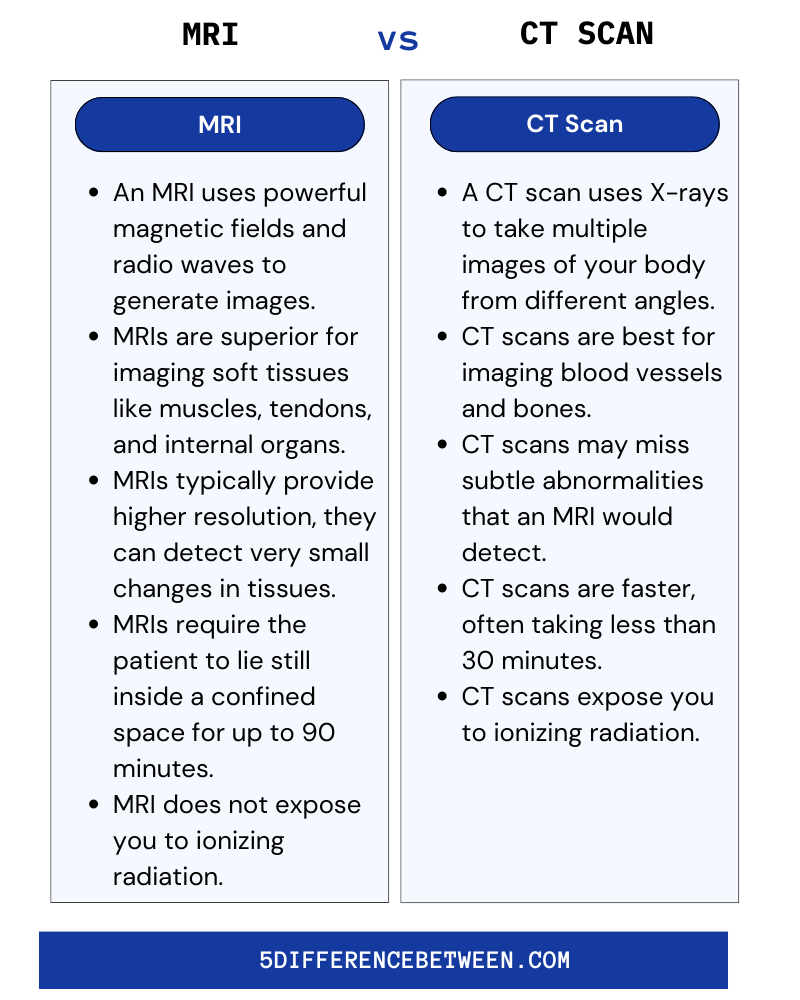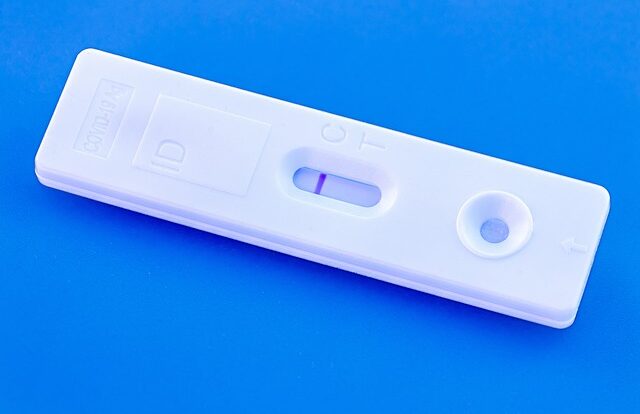A CT scan and MRI are two of the most common medical imaging tests. While they both provide detailed images of your internal structures, there are some key differences between them.
What is MRI?
An MRI (magnetic resonance imaging) scan uses magnetic fields and radio waves to create detailed images of the inside of your body. MRI scans are often used to examine the brain, spine, heart and other soft tissues.
MRI machines are large tubes that contain powerful magnets. You lie on a table that slides into the lighting tube. The magnets in the machine generate a magnetic field that aligns the protons in your body’s hydrogen atoms, and then radiofrequency waves are directed at those atoms to produce signals that are detected by the scanner. A computer processes the signals to create clear, detailed cross-sectional images (slices) of the internal structure of your body.
Also Read > Difference Between Illness and Disease
Some people feel claustrophobic in the MRI machine. Mild sedation can be provided to help you relax. You can also bring music to listen to during the scan. Metal objects like jewelry, watches or credit cards must be removed before entering the MRI room since they can be affected by the magnetic field. An MRI is usually not recommended for people with metal implants like pacemakers.
What is CT Scan?
A CT scan, or computed tomography scan, uses X-rays to create detailed images of your organs, bones, and other tissues.
How does it work? CT scanners shoot X-ray beams through your body at different angles, detecting the amount of radiation absorbed or transmitted by your tissues. A computer then combines these X-ray images into cross-sectional views of the scanned area. CT scans provide much greater detail than regular X-rays.
When do you need a CT scan? CT scans can detect tumors, blood clots, infections, or internal injuries. They’re often used to examine the lungs, abdomen, pelvis, or brain. CT scans are commonly used to diagnose conditions like cancer, heart disease, infections, or injuries after an accident.
The CT scanning process is painless but does require you to lie still on a table while the X-ray tube rotates around your body. You may receive an injection of contrast dye to help enhance the images. The scan usually takes just a few minutes, though the prep and recovery time add to the total appointment length.
CT scans are a very useful diagnostic tool, but they do expose you to radiation. The amount of radiation depends on the type of CT scan, but the risk is higher for frequent tests. Your doctor will consider your medical history and only order CT scans when medically necessary and at the lowest radiation dose needed to get clear results.
So if your doctor orders a CT scan, don’t worry – it’s a common and painless procedure that provides valuable information to determine the best treatment plan for your health.
MRI Vs CT Scans

In summary, while CT and MRI scans are two of the most useful diagnostic tools, there are some distinct differences to keep in mind regarding how they work, what they can detect, image detail, patient experience, and overall cost. The difference between MRI and CT Scan is that an MRI scan uses magnetic fields and radio waves whereas A CT scan uses X-rays to create detailed images. The type of scan your doctor orders will depend on your symptoms and medical needs.


